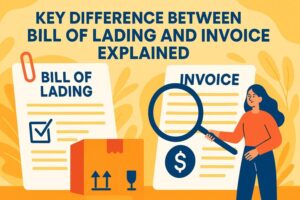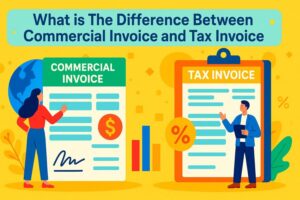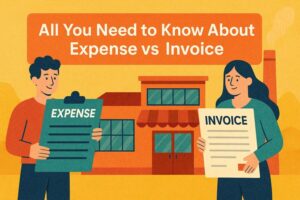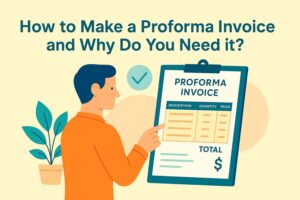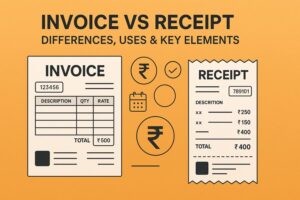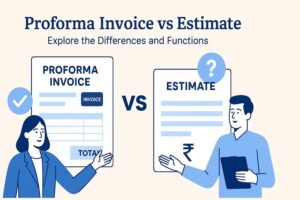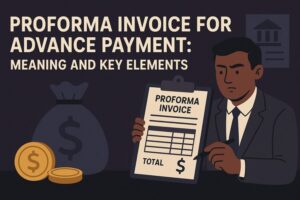Key Differences Between Sales Invoice and Purchase Invoice Explained
- 26 Nov 25
- 6 mins
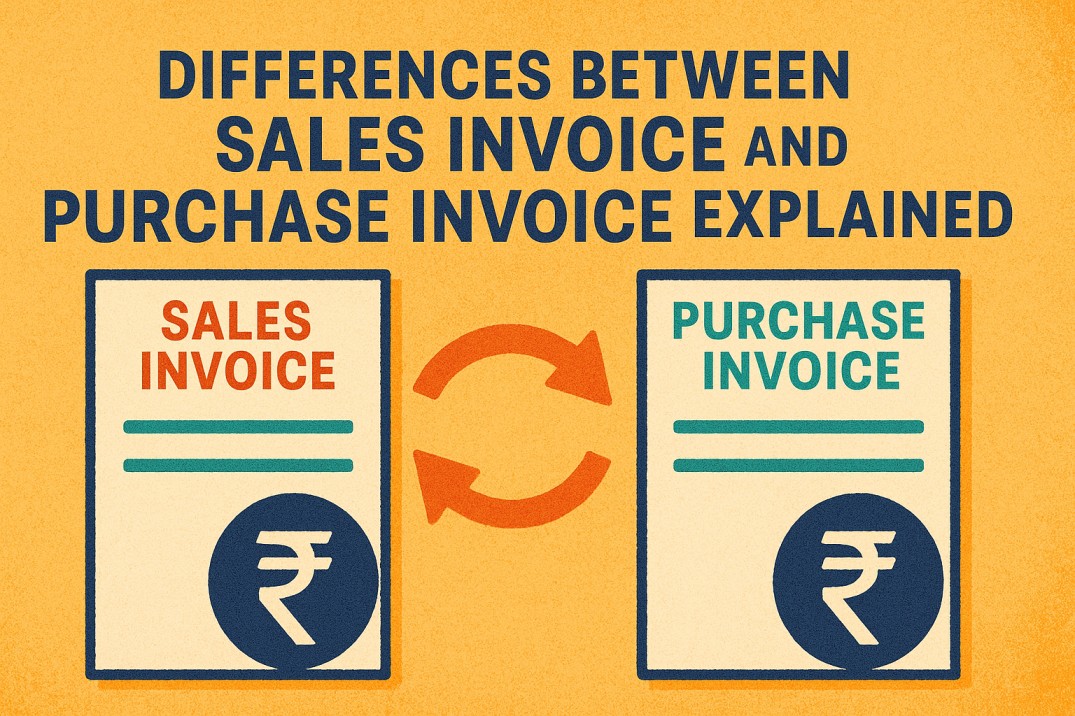
Key Differences Between Sales Invoice and Purchase Invoice Explained
- What is the Difference Between Sales Invoice and Purchase Invoice?
- What is a Sales Invoice?
- Top 3 Features of a Sales Invoice
- Example of a Sales Invoice
- What is a Purchase Invoice?
- Top 3 Features of a Purchase Invoice
- Example of a Purchase Invoice
- Why Differentiate Between a Sales Invoice and a Purchase Invoice?
- Real-World Use Case of Sales Invoice and Purchase Invoice
- Conclusion
Key Takeaways
- The core difference between sales invoice and purchase invoice lies in perspective: Seller vs. buyer.
- A sales invoice records income, while a purchase invoice records an expense or liability.
- Both documents reflect the same transaction, but show opposite cash flow directions.
- Sales invoices help track revenue, whereas purchase invoices help monitor business expenditure.
- Understanding the difference between sales invoice and purchase invoice improves GST compliance, cash-flow planning, and bookkeeping accuracy.
Are you confused about whether to record an invoice as expense or income? Then, trust us, you are not alone! Such confusion is pretty common among GST-registered taxpayers.
The solution to this issue solely depends on whether you are selling or buying. For example, if your company sells 100 units at ₹500 each, you will issue a sales invoice worth ₹50,000. But for the buyer, that same document is a purchase invoice. Interesting, right?
In the following, we will explore the difference between sales invoice and purchase invoice, their use cases, components and more to clarify your confusion.
What is the Difference Between Sales Invoice and Purchase Invoice?

Also known as vendor and buyer invoices, purchase and sales invoices are the same document with different roles. Here’s how they differ:
| Particulars | Sales Invoice | Purchase Invoice |
| Issuer | Seller | Buyer |
| Receiver | Buyer | Seller |
| Purpose | Payment request for delivered goods/services | Acknowledgement to complete the payment for received goods/services |
| Accounting Type | A sales invoice enhances income, thus recorded as accounts receivable. | A purchase invoice results in an expense, thus recorded as accounts payable. |
| Usage | To track the company’s revenue | To monitor a company’s expenditure |
| Inventory | Cash inflows | Cash outflows |
Though sales invoice and purchase invoice share many dissimilarities, they share one common resemblance: the content. Both of them reflect the same transaction but from opposite viewpoints.
Now that you know about the difference between sales invoice and purchase invoice, let us decode them individually.
What is a Sales Invoice?
A sales invoice is a record-keeping document. It transits from the vendor to the buyer. A seller generates it after delivering products or services. A sales invoice plays a significant role in GSTR filing and ITC claims.
💡For your invoice generation needs, use the PICE App.
Top 3 Features of a Sales Invoice
- A seller can only create a sales invoice.
- A buyer can only receive a sales invoice.
- It is essential for tax preparation and bookkeeping.
Example of a Sales Invoice
Let us understand the sales invoice with an example:
Suppose XYZ Private Limited, a furniture manufacturer, has delivered 100 units of chairs priced at ₹160 each to a furniture retailer, EFG Private Limited. Now, the furniture manufacturer will issue a sales invoice for ₹16,000, which is due in 30 days. Here’s how it will look:
| XYZ Private LimitedGSTINBusiness PAN NumberBusiness AddressContact Details | |||
| Invoice Number: XXXXXXXXXXXXXXXX | |||
| Invoice Date: 29.07.2025 Due Date: 30.08.2025 | |||
| Invoice For: EFG Private LimitedGSTINBusiness PAN NumberBusiness AddressContact Details | |||
| Delivered Goods/ Services: 100 Units of Chairs | |||
| Each Chair Cost:₹160Total Cost: ₹16,000GST Applied: ₹16,000 x 18% = ₹2,880Total Payable: ₹16,000 + ₹2,880 = ₹18,880 |
What is a Purchase Invoice?
A purchase invoice is literally the same invoice, but from the buyer’s perspective. It mirrors the total cost that the buyer must bear. It should be recorded in the buyer’s accounting as an expense or liability.
Top 3 Features of a Purchase Invoice
- It is received by the buyer.
- It originates from a vendor or supplier.
- For verification, buyers match it with the purchase order and delivery receipt.
Example of a Purchase Invoice
If we take the previous example of the sales invoice, the same invoice will be a purchase invoice for the furniture retailer, EFG Private Limited. It will be recorded in their accounting system as an upcoming payment.
Why Differentiate Between a Sales Invoice and a Purchase Invoice?

Knowing the difference between purchase and sales invoices will help you maintain financial accuracy in your company. Take a look at some of the additional benefits:
1. Cash Flow Management
A proper management of when you get paid and when you have to pay is the key to effortlessly maintaining liquidity. While a delayed generation of sales invoices might affect your brand image and cash inflow, overdue purchase invoices can incur penalties.
2. Tax Filing and Compliance
Sales and purchase invoices are essential to calculate the claimable or owed GST and file tax returns. Not only does it help you stay on the right side of the law, but it also lets you survive internal audits.
3. Understand the Role of Invoices
Invoicing plays a vital role in the accounting cycle. It impacts how financial circumstances, expenses or incomes are reconciled.
Real-World Use Case of Sales Invoice and Purchase Invoice
Let’s break down how a B2B transaction with sales and purchase invoice flows:
- Step 1: ABC Retail issues a purchase order (PO) ordering 500 units of a product from XYZ Supplier.
- Step 2: XYZ creates a proforma invoice (PI) detailing the cost estimation of the ordered product.
- Step 3: After ABC agrees to the proposed price, XYZ ships the items with a delivery note.
- Step 4: Post-delivery, XYZ generates a sales invoice and sends it to ABC.
- Step 5: ABC logs it as a purchase invoice and sends the payment within the due date.
- Step 6: Once paid, both parties mark their respective invoices as paid and update their records.
Conclusion
Proper invoicing is at the heart of every business transaction. By getting a clear idea of the difference between sales invoices and purchase invoices, you can keep your company compliant with financial records and prevent costly mistakes.
 By
By 





